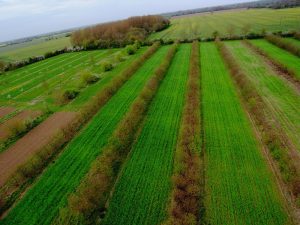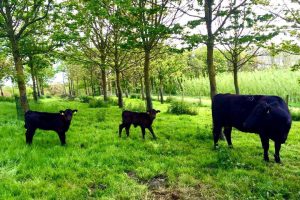Research
Research Status:completed
We use some essential cookies to make this website work.
We’d like to set additional cookies to understand how you use forestresearch.gov.uk, remember your settings and improve our services.
We also use cookies set by other sites to help us deliver content from their services.

This research explored the potential of agroforestry to contribute to meeting greenhouse gas emissions reductions targets outlined in Scotland’s Climate Change Plan.
Agroforestry is the combination of trees and agriculture on the same plot of land, with tree density varying depending on agricultural land type, tree species, and objective. The study also examined the economic viability of adopting agroforestry.

Key findings are: (1) While all forms of agroforestry have the potential to sequester carbon, the benefits will vary depending on soil type, species, planting density, and location. The fastest rate of carbon sequestration is most likely to be achieved on highly productive lowland sites. (2) All forms of agroforestry suitable in Scotland are generally financially viable (i.e. generate positive income for farmers), though benefits depend on time period and whether farmers can ‘cash-in’ on wider ecosystem service benefits from agroforestry in the form of Payments for Ecosystem Services (PES) and/or public grants.

Economist

Principal Scientist
Cookies are files saved on your phone, tablet or computer when you visit a website.
We use cookies to store information about how you use the dwi.gov.uk website, such as the pages you visit.
Find out more about cookies on forestresearch.gov.uk
We use 3 types of cookie. You can choose which cookies you're happy for us to use.
These essential cookies do things like remember your progress through a form. They always need to be on.
We use Google Analytics to measure how you use the website so we can improve it based on user needs. Google Analytics sets cookies that store anonymised information about: how you got to the site the pages you visit on forestresearch.gov.uk and how long you spend on each page what you click on while you're visiting the site
Some forestresearch.gov.uk pages may contain content from other sites, like YouTube or Flickr, which may set their own cookies. These sites are sometimes called ‘third party’ services. This tells us how many people are seeing the content and whether it’s useful.
